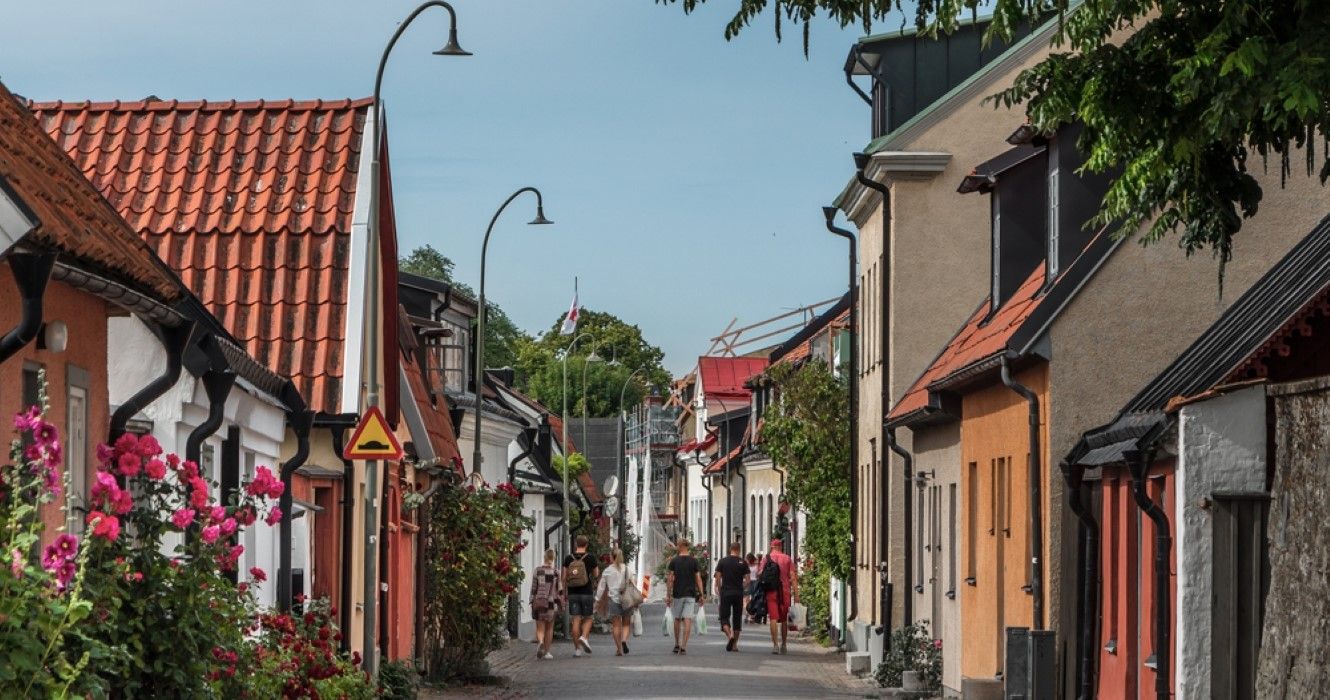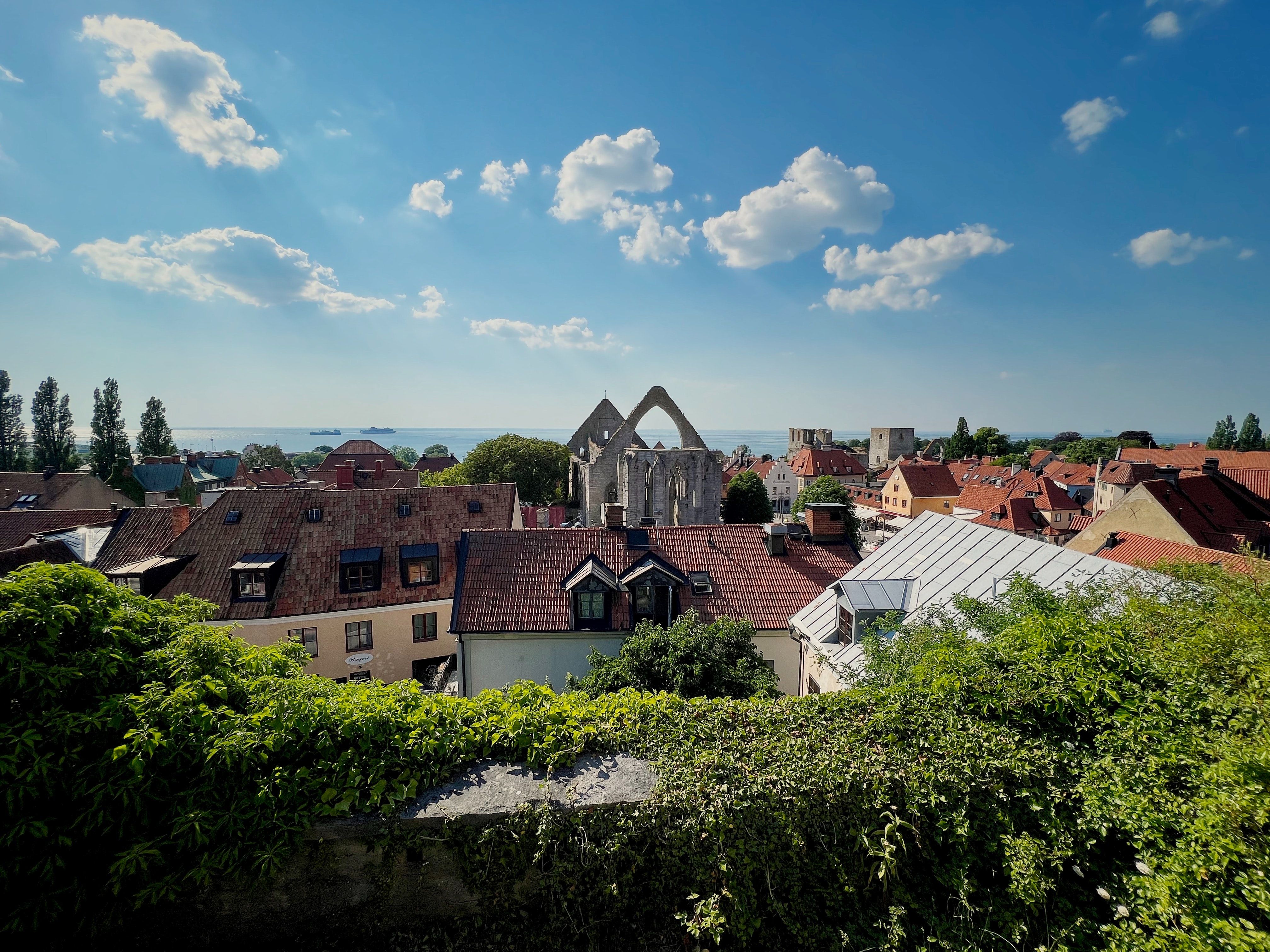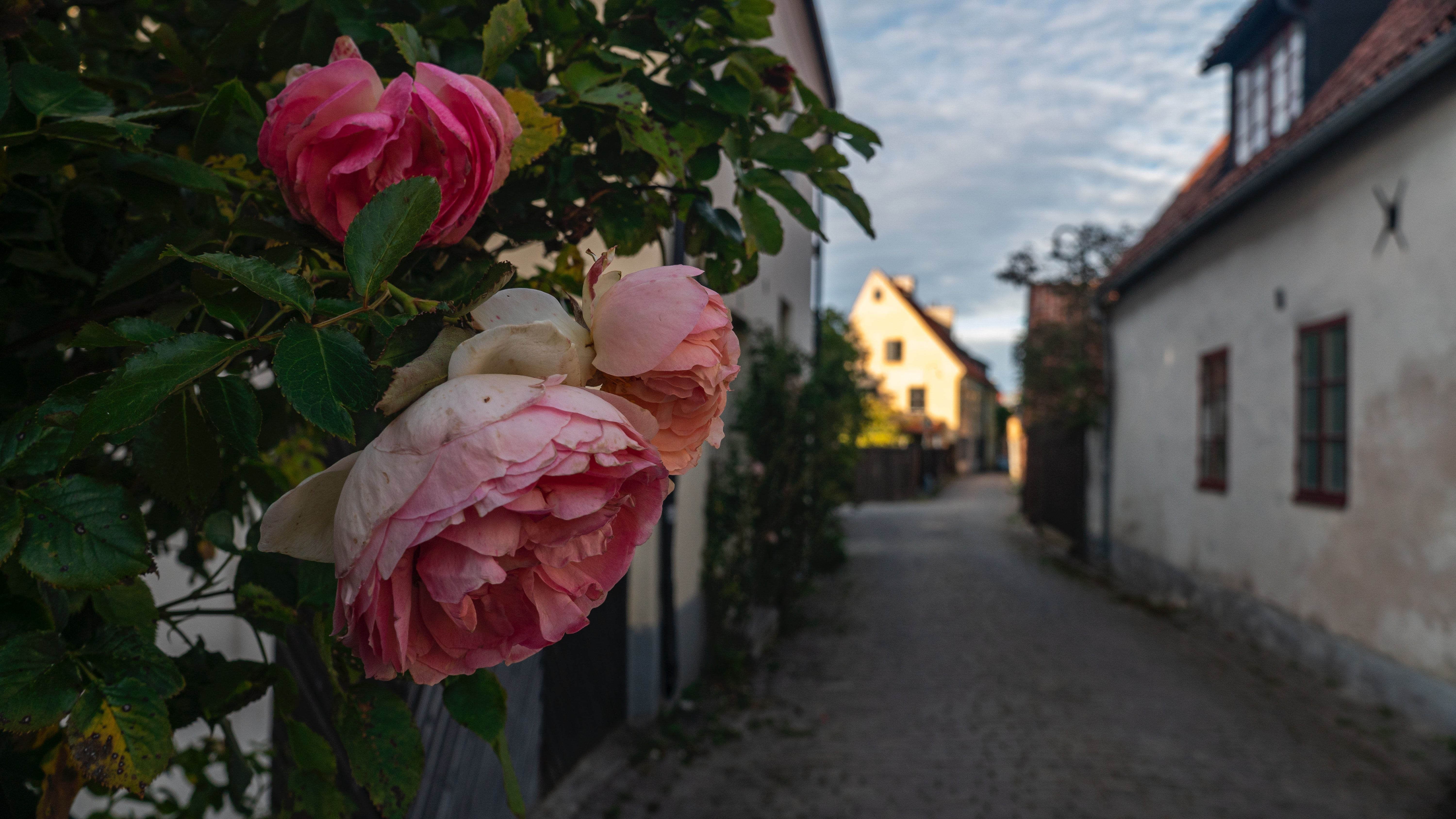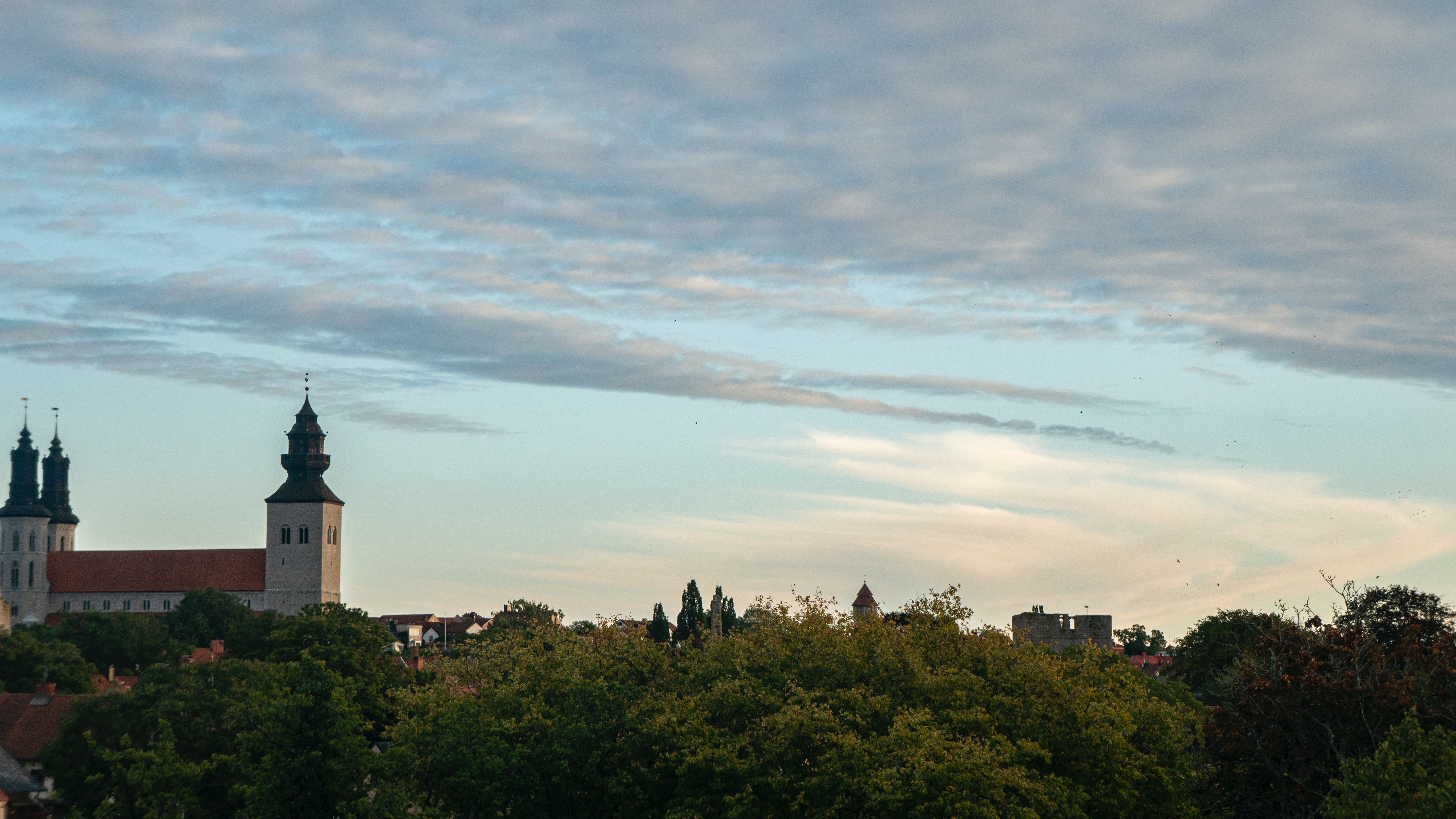Sweden has a reputation for its enchanting cities and accessible streets. About 62 miles off of the country's eastern shoreline lies Gotland, one of the country's many charming islands. A former Viking stronghold, it features some of Sweden's best preserved medieval centers.
The town of Visby is Gotland's largest village. Dating from the 12th century, Visby is a UNESCO-protected site that showcases cobblestone streets and fascinating ruins. Its pastel buildings resemble a watercolor painting ornamented by beautiful flowers and greenery. Quaint and enclosed, Visby's old town is a wonderful place to take a stroll through Scandinavia's history.
The History Of Visby
Gotland was initially settled by Vikings, who took full advantage of its harbors and steep cliffs. Visby's convenient location in the Baltic Sea allowed it to become a trading hub in the Middle Ages. Between 1161 and 1360, it served as one of the most important mercantile centers between Scandinavia and Central Europe. Over time, its warehouses and ramparts were fortified and expanded to give it a truly impressive silhouette.
Visby's interior is home to the remnants of over 200 warehouses and dwellings from its days as a medieval capital of trade. The economy brought from overseas allowed the town to install a variety of water and sewage systems, as well as construct many impressive structures. The site is ribbed by the bones of its medieval churches, which stand as reminders of when it had the most churches of any town in Sweden. Designed with Gothic and Romanesque features, the ruins offer an interesting peak into the city's former cultural glory.
The original defensive wall still encircles the town, dotted by dry moats and trenches. These were used to fend off multiple attacks over its history before eventually succumbing to a series of invasions. Although attacks led Visby to lose its mercantile spotlight in the 15th and 16th centuries, its social and architectural heart continued to beat behind its fortified walls. This has allowed it to blossom into a quaint but popular destination. Its past and present have melded to give it an enchanting atmosphere.
How To Get To Gotland
The island of Gotland can be reached by taking a ferry or plane. A variety of options are available from mainland Sweden. It is typically ideal for traveling during the summer when there are more outgoing trips, and the weather is better. On the other hand, other seasons see the town less cramped with tourists.
By Ferry
Destination Gotland operates ferries from Sweden's mainland to Visby. Visitors can depart from Nynäshamn, which is south of Stockholm. Otherwise, they can also leave from the port of Oskarshamn, which is on the east coast of Småland.
- Estimated Duration: 3-3.5 hours
- Estimated Price: $$
By Plane
Flights to Visby are generally more expensive than boat rides, but they are the faster option. Visitors can travel from the spectacular capital of Stockholm to the town via SAS or Norwegian airlines.
- Estimated Duration: 30-40 minutes from Stockholm
- Estimated Price: $$$
What To Visit In Visby
Visby is a great location to explore on foot. Similar to Sweden's other hidden gems, the town features some stunning sights. Its cobblestone streets are mainly flat and were designed for pedestrians. Along its avenues, soft-hued cottages and blooming window flowers peek out at the passersby. Its oldest section can easily be covered in less than an hour, but it deserves a thorough exploration. Guided walking tours are available for a variety of topics. But for those wanting to personalize their adventure, here is how to plan a route that will hit all of Visby's highlights.
The Church Ruins
Visitors can start their journey on the northern side of the town, beginning with the ruins of the St Nicolai Church. Built by Dominican monks in 1230, the remains still demonstrate the building's intricate arches. Then, you can head south to the Sankta Maria Church, which is an intact and amazingly preserved example of baroque architecture. Finally, you can stop by the remnants of St Karins Church and wander among its skeletal walls.
The Gotland Museum
Visby's archeological past is on full display at the Gotland Museum. Stone Age artifacts, Viking treasures, and medieval armor are all exhibited within it. Skeletons and rock art tell the story of the island and its first settlers.
- Opening Hours: May - September: 10 AM - 6 PM, October - April: 11 AM - 4 PM
- Entry Cost: ~$15 per adult (May - September), ~$10 per adult (October - April), $12 per student (May - September), ~$8 per student (October - April), free for everyone under the age of 19
The Botanical Garden
Gotland offers many scenic nature scenes. The Botanical Garden is especially picturesque and creates a fantastic atmosphere to rest and relax. It can either be visited early on, from the ruins of the St Nicolai Church, or looped back to after a stroll through the Gotland Museum. Pretty ornaments, fragrant flowers, and an adorable gazebo greet guests as they wander through its emerald lawns. Afterward, pick your way along the ring wall to get a final glimpse of Visby's incredible history.




